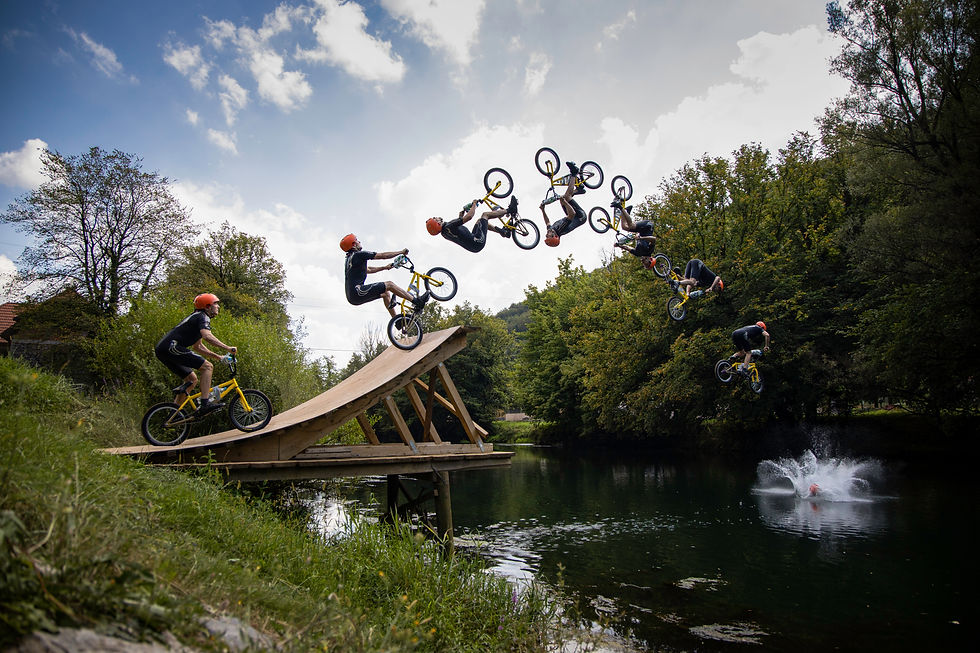The Influence of Social Media on Extreme Street Sports
- Jessica Hall
- Sep 27, 2024
- 3 min read
Social media has transformed the way we experience and participate in extreme street sports like BMX, skateboarding, and parkour. Platforms like Instagram, TikTok, and YouTube have become essential tools for athletes to showcase their skills, build communities, and inspire the next generation of riders and traceurs. In today’s digital world, street sports aren’t just about the tricks performed on the streets — they’re about how those tricks are captured, shared, and celebrated online.

Instant Visibility for Athletes
One of the most significant impacts of social media on extreme street sports is the instant visibility it provides. In the past, athletes had to rely on sponsorships, competitions, or word of mouth to gain recognition. Today, anyone with a smartphone can film their latest trick or run and share it with millions of people in just a few taps.
Platforms like Instagram and TikTok are particularly well-suited for extreme sports, as they prioritize short, engaging video content that can be quickly consumed. Athletes are using these platforms to post clips of their best tricks, runs, and stunts, often adding music or editing effects to make their content more visually appealing. This not only helps athletes build a following but also opens up opportunities for sponsorship deals, brand collaborations, and competition invites.

The Rise of Influencer Athletes
With social media comes the rise of the influencer athlete. Skaters, BMX riders, and parkour athletes are building personal brands around their skills and personalities, amassing large followings and influencing street sport culture in the process. These influencer athletes often collaborate with brands, film tutorials, and create content that extends beyond their sports, blending street culture with lifestyle, fashion, and entertainment.
For example, skateboarders like Nyjah Huston and parkour athletes like Storror have built massive followings on social media, turning their passion for street sports into full-time careers. Their influence goes beyond just performing tricks — they’re shaping the way street sports are perceived and consumed by a global audience.
Creating Global Street Sport Communities
Social media has also made it easier for athletes to connect with like-minded individuals across the globe. Street sports like BMX, skateboarding, and parkour are often practiced in local, tight-knit communities, but social media has expanded these circles, allowing athletes to share tips, challenges, and inspiration with others worldwide. Platforms like YouTube and Instagram allow for the exchange of ideas, helping street sports evolve as athletes learn from each other’s techniques and innovations.
Virtual competitions and challenges are also gaining traction, where athletes submit videos of their runs to compete with others in different parts of the world. These online events are helping to democratize extreme sports, allowing anyone, regardless of location, to participate and gain recognition.
The Future of Social Media and Street Sports
As social media continues to evolve, its impact on extreme street sports will only grow. New features like live streaming, augmented reality, and virtual reality could offer even more ways for athletes to engage with their audiences and showcase their talents. At the same time, social media will continue to serve as a powerful tool for building communities, promoting inclusivity, and pushing the boundaries of what’s possible in street sports.
Whether you’re a seasoned pro or just getting started, social media has made it easier than ever to get involved in extreme street sports, offering endless opportunities to learn, connect, and share your passion with the world.




Comments